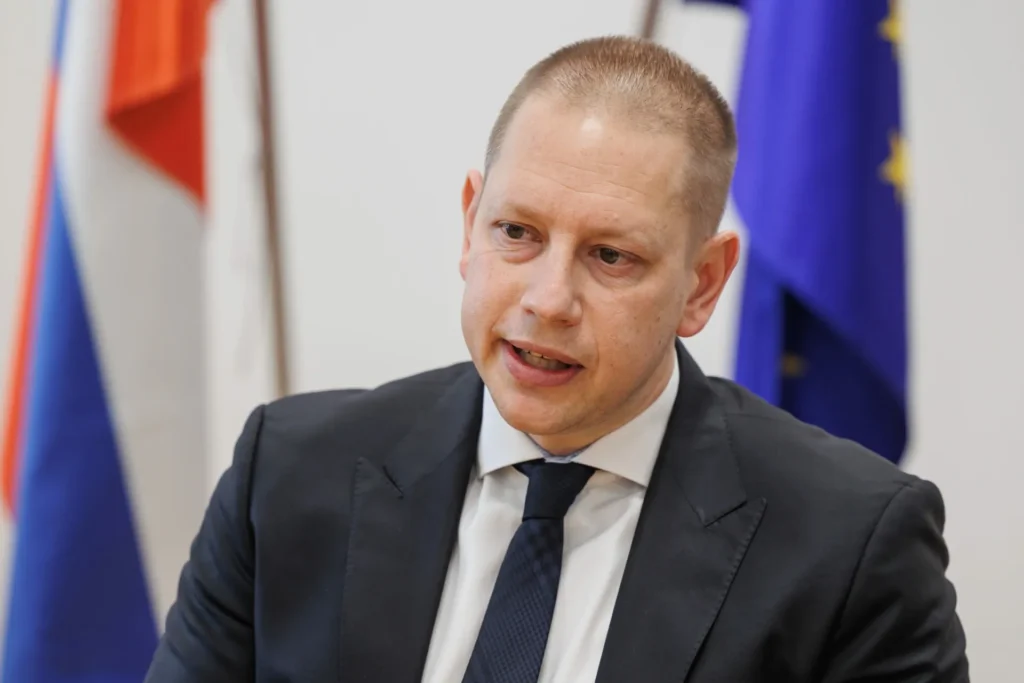IMOS, the company that bought the land in Trenta from Janez Janša, signed contracts with the state amounting to a total of 62 million euros between the years 2000 and 2004, which is six times more than what they earned during the term of Janez Janša’s government. In his claims, the prosecutor, Boštjan Valenčič, therefore miscalculated the value of the deals with the state in the period between 2004 and 2008.
We are continuing with our analysis of the Trenta judicial construct. You can read the first part here: https://nova24tv.eu/featured/analysis-of-the-trenta-affair-part-1-jansas-plot-was-several-times-cheaper-than-other-properties/. The defendant Branko Kastelic said that the Supervisory Board had approved or even proposed strategies for accelerated land acquisitions, which was also confirmed by the President of the Supervisory Board, Zorman, in his testimony.
A bold business decision
IMOS’ market strategy was targeting the Ljubljana, Dolenjska, Primorska and Gorenjska regions (the company had built apartments in Bovec in the past), which made the purchase in question a bold business decision, but Kastelic said that the purchase had to be judged in light of the business decisions made at the time and the developments on the real estate market at the time.
The request for an investigation at the time, as well as the prosecution’s indictment, points out that there were no comparable transactions in Trenta in that period (2005-2006), and while this is accurate, it does not mean that there were no later transactions. The indictment deliberately covers only a very short period.
In fact, the Surveying and Mapping Authority of the Republic of Slovenia (GURS) records show two comparable transactions in later years, namely during the period of the economic crisis! These are:
– forest land from 2010, measuring 1120 square metres, for 7,977 euros (7.12 euros per square metre);
– agricultural land from 2012 of 5384 square metres for 65,379 (12,14 euros per square metre).
The average price of the land in Trenta for the two transactions (where no building – not even in a dilapidated state, which could be replaced by another new building of the same dimensions and purpose – stands on any of the plots) was therefore 11,3 euros per square metre, both of these transactions having been concluded during the real estate crisis (when prices had fallen drastically).
It is not true that IMOS concluded more deals than average during the Janša government
Kastelic denied the claims that IMOS closed more deals during the first term of the Janez Janša government than before and after. He pointed out that the court did not even require IMOS to provide information on all contracts with the state at that time, nor who were the signatories of the contracts.
He claims that the prosecution is manipulating the data, namely the value of the deals with the state in 2003 and 2004 compared to 2005, 2006, 2007, 2008, 2009 and 2010, thus comparing two years with six, and problematising the increase, which Kastelic calls pure manipulation.
Furthermore, the prosecution cites six contracts as evidence of closer cooperation with the state, only two of which were signed during the first Janša government. Kastelic showed a list of controversial contracts that allegedly indicate increased business activity with the state during the term of the Janša government.
The value of the two projects in 2003 and 2004 (during the Rop government) is almost twice as high as the four projects concluded in 2006-2008. Kastelic also stated that the deal for the ZUIM institute was not concluded with the state, but with the company SGP Graditelj, for which IMOS was a subcontractor for certain works.
This already shows that the prosecution is misleading, but this becomes even clearer when analysing the contracts concluded. Furthermore, it is worth mentioning a few contracts concluded in the years 2000-2004 (before the Janša government), which are not mentioned, and which were also paid after 2004, i.e. during the Janša government, for a total of 62 million euros! That is six times more! During this period, the governments in power were predominantly left-wing, with the exception of a brief period under Andrej Bajuk.
The judge disregarded the objection
Kastelic also pointed out that his arguments – that the Surveying and Mapping Authority valuation cannot be automatically mapped to the real price of the property, that the prosecution was misled into believing that several deals had been made during the Janša government – were not taken into account by the court, which instead rejected his objection, even though the prosecution’s blatant manipulations served as “proof of his abuse of office.” The judge even stated after the hearing that his answers were valid, but that “it may happen that the Chamber will think otherwise.” It should be recalled that in the current Senate, Janša’s defence lawyer, Matoz, revealed suspicions of political bias on the part of the jurors.
The court rejected the appeal with the lousy explanation that the court would not read into the contents (although it should), but would select a forensic expert.
TO BE CONTINUED: In Part 3, we will write about the politically motivated appraisals that were made throughout the trial …
I. K.


